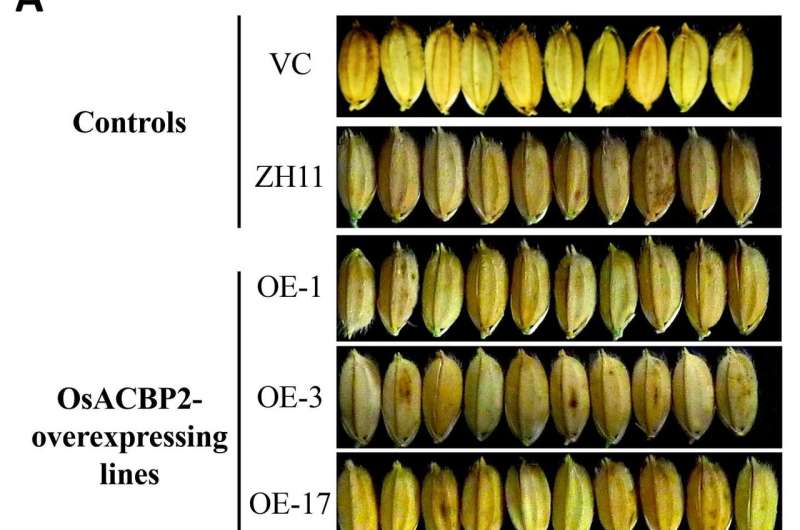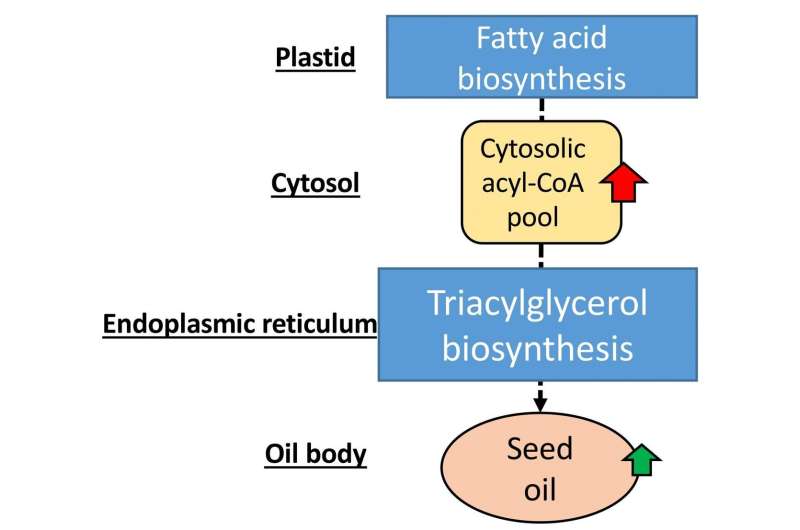Plant scientists identify new strategy to enhance rice grain yield

Rice provides daily subsistence for about three billion people worldwide and its output must keep pace with a growing global population. In light of this, the identification of genes that enhance grain yield and composition is much desired. Findings from a research project led by Professor Mee-Len Chye, Wilson and Amelia Wong Professor in Plant Biotechnology from the School of Biological Sciences of The University of Hong Kong (HKU), with postdoctoral fellows Dr. Guo Zehua and Dr. Shiu-Cheung Lung, in collaboration with researchers from the University of Calgary and Rothamsted Research (UK), have provided a new strategy to enhance grain yield in rice by increasing grain size and weight. The research results have been published in The Plant Journal and an international patent has been filed.
In this technology, the research group led by Professor Chye has identified a protein, ACYL-COA-BINDING PROTEIN2 (OsACBP2) from rice (Oryza sativa), that when overexpressed in transgenic rice, will enhance grain size and weight by 10% and elevate grain yield. The biomass of the OsACBP2-overexpressing transgenic rice grains exceeded the control by over 10%. OsACBP2 is a lipid-binding protein that binds lipids such as acyl-CoA esters, the major precursors in seed oil production. Oil was observed to accumulate in the transgenic rice grains. OsACBP2 is promising not only in enhancing grain size and weight, but also in improving nutritional value with a 10% increase in lipid content of rice bran and whole seeds.
As OsACBP2 contributes to boosting oil content as well as size and weight in transgenic rice grains, an application of this technology in rice is expected to benefit agriculture by increasing grain yield and composition to satisfy the need for more food. Professor Chye said: "Increasing grain size and yield, besides rice bran and seed lipid content, in crops such as rice is an important research area that aligns with the aspirations of Dr. Wilson and Mrs Amelia Wong on the use of plant biotechnology for a sustainable future. Furthermore, as rice bran oil is considered highly valuable because it contains bioactive components that have been reported to lower serum cholesterol and possess anti-oxidation, anti-carcinogenic and anti-allergic inflammation activities, this technology, if applied to other food crops, would not only help address food security but also elevate nutritional properties in grains."

More information: Ze‐Hua Guo et al, The overexpression of rice ACYL ‐ CoA ‐ BINDING PROTEIN 2 increases grain size and bran oil content in transgenic rice, The Plant Journal (2019). DOI: 10.1111/tpj.14503
Journal information: The Plant Journal
Provided by The University of Hong Kong





















